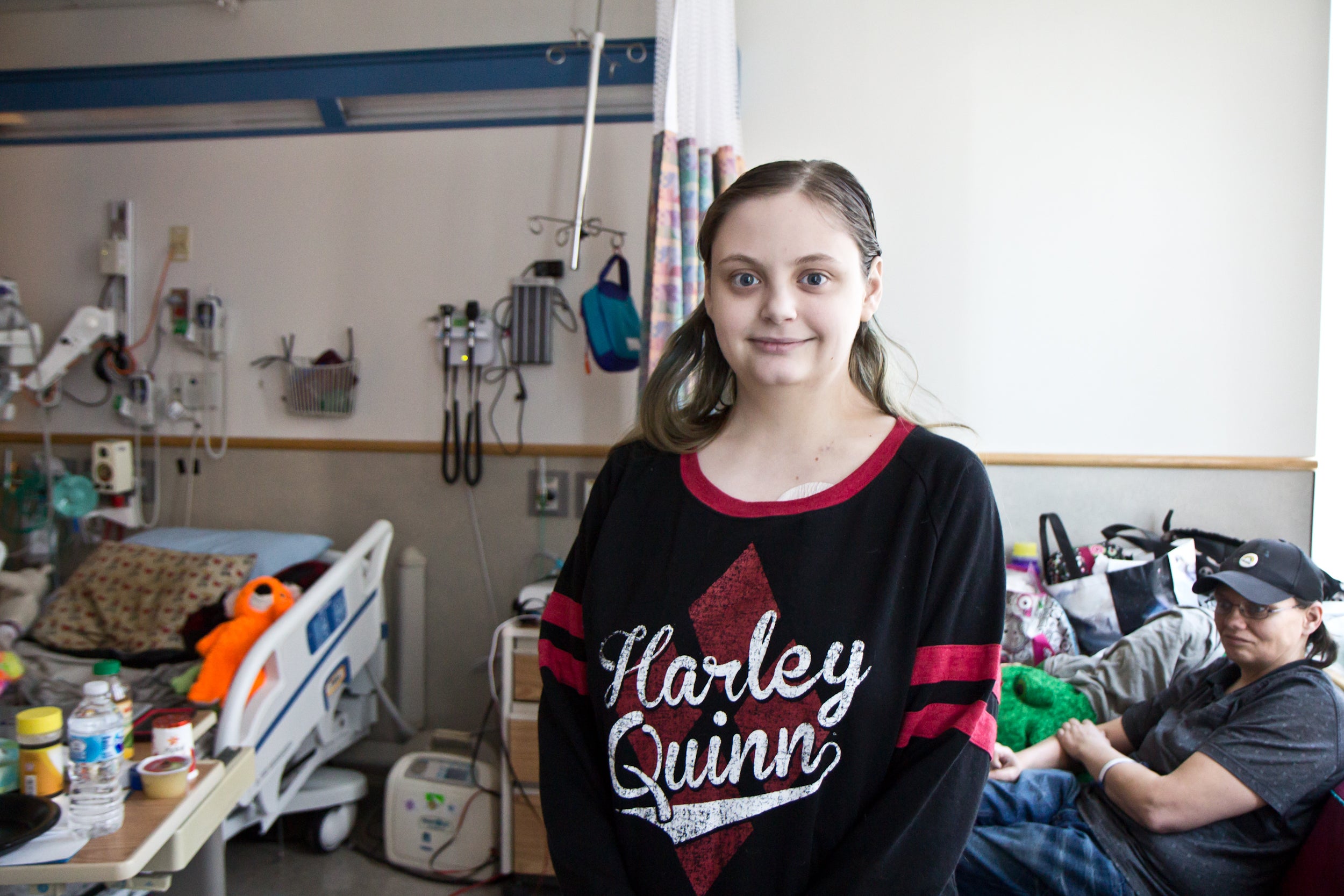Making movies animates long-term Children’s Hospital patients
Drexel University students are teaming up with young patients at CHOP to create animated films.
Listen 2:02Imagine all the work it takes to make a good animated film. There’s the initial idea, the story planning, and the actual animation. That process is unfolding with some unlikely producers at the helm: The writers are young, long-term patients at Children’s Hospital of Philadelphia, and students at Drexel University are helping them turn their visions into reality.
Seventeen-year-old Jenaveve Mitzel created a faraway planet, where the trees are purple and the leader is a semi-autobiographical angel named Alexandria.

“I’ve always wanted to fly I guess, so I’m like, ‘OK, I’ll give her wings so she can fly,’ ” Mitzel explained. “She’s just how I’d be if I was able to fly, basically. The only difference is the wings.”
Mitzel has cystic fibrosis, a genetic disorder that affects the respiratory and digestive systems and can be life-threatening. For Mitzel, that means she gets regular lung infections that land her in the hospital for weeks at a time.
Often, she can’t leave her room because she is extra-sensitive to germs and bacteria and can’t risk exposure. That can be boring. So when the staff at CHOP approached her about the animation project, she was excited.
“They came in, and I was speechless. I said ‘yes,’ and that’s all I could say,” she said.
The production process is a team effort. It all started with Nomi Eve, a novelist and professor at Drexel who teaches a story medicine course at CHOP. In that class, CHOP patients watch as Eve’s students perform live-action plays of scripts dreamed up by the patients themselves. The class was so successful, Eve wondered if they could expand to something bigger — something the patients could show off and really take ownership of. So she recruited a handful of committed students, including Victoria Milano, to start the animation project.
“Everybody loves a good animated Disney movie, and we wanted to be able to give these patients something they could keep for the rest of their life,” said Milano, who is a pre-med psychology major.
Milano and her fellow students helped the patients translate their characters, settings, and story ideas into coherent narratives. From there, they brought in Drexel’s animation lab, which devoted an entire class of students to planning each scene and animating the patients’ ideas. It was up to CHOP staff to find the right patients.
Kent Wyckoff, the production lead for patient media and entertainment at CHOP, said that choosing committed patients is no small task. The medical conditions many of the patients deal with create logistical headaches.
“You just can’t always predict how long somebody’s going to be there,” Wyckoff said. “And not just from a discharge standpoint, but if you have someone who’s really sick, you don’t know how long they physically will be with us.”
He selected four patients to start.
Arts and music therapy are more well-known in the medicine world, and studies have shown that, when combined with other treatments, they can reduce hospital stays for some patients. But Wycoff says since every patient is different, sometimes producing film or TV is the thing that offers the creative outlet or simply the distraction they need.
“It can be an outlet for kids who want to express themselves, but won’t respond to anything else,” he said. “It can get you out of your room or get you out of your mind, if you can’t leave your room.”
That’s certainly the case for Mitzel, whose 2-minute film, “The Battle of Havenmist,” depicts a duel between the angel Alexandria and what Mitzel describes as her “frenemy”over the death of her adversary’s family. Swords are drawn and magical gems, which the characters must wear in order to stay alive, glow fiercely around their necks throughout the fight.
“It just helps me forget that I’m here in the hospital, having to go through all the antibiotics and all that,” she said. “It helps me have fun.”
Mitzel’s mother, Patricia, said that giving her daughter something to focus on was helpful in alleviating Jenaveve’s anxiety surrounding surgeries, and falling behind in school due to her hospitalizations.
“Every once in a while, she’d get this little break where she was not thinking about that at all, which was amazing to see,” she said.
While Mitzel’s fantastic storyline offered her an escape, some of the other patients’ stories were more autobiographical, according to Milano, who said she helped some patients craft fictional narratives based on their own struggles. One young patient named Jose created the protagonist “Dog Jackson,” who wanted to be a star, but was held back due to heart complications.
“I’ve been in that situation, and I know that it’s difficult to express yourself,” said Milano, who has undergone multiple heart surgeries.
While the Drexel students are mostly there to help the patients, Milano said the opportunity to be involved in her community and not just sit in a classroom offers her a lot, too. She said every time she leaves the hospital, she feels inspired.
“You would think it would be the total opposite, walking out of a children’s hospital and working with patients that are so sick and have such different lives,” Milano said. “But it makes you realize, this is why I’m studying what I want to study.”
Mitzel and her three fellow patients joined their families, the Drexel producers, and animators in celebrating the screening of their films.
WHYY is your source for fact-based, in-depth journalism and information. As a nonprofit organization, we rely on financial support from readers like you. Please give today.





